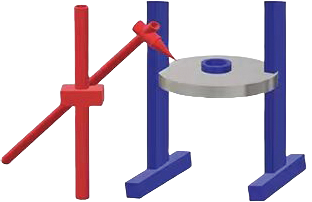Consideraciones clave para la sujeción de piezas de trabajo en mandriles posicionadores de soldadura
Al utilizar un posicionador de soldadura, es fundamental sujetar correctamente la pieza de trabajo para garantizar la seguridad, la precisión y la eficacia. El mandril (o dispositivo de sujeción) debe sujetar firmemente la pieza de trabajo para evitar que se mueva durante la rotación o la soldadura. A continuación se indican las precauciones esenciales que deben seguirse:
1. Elegir el mandril adecuado para la pieza
- Seleccione un plato compatible con el tamaño, la forma y el peso de la pieza.
- Asegúrese de que la fuerza de sujeción es suficiente para soportar las vibraciones y las fuerzas de rotación.
2. Inspeccione el mandril y la pieza antes de sujetar
- Compruebe si hay desgaste, daños o desalineación en las mordazas del mandril.
- Limpie el portabrocas y las superficies de contacto de la pieza para evitar deslizamientos.
3. Alinear correctamente la pieza de trabajo
- Centre la pieza en el mandril para evitar desequilibrios durante la rotación.
- Utilice herramientas de alineación si es necesario para garantizar una presión de apriete uniforme.
4. Aplique una fuerza de sujeción uniforme
- Apriete las mordazas simétricamente para evitar deformaciones o tensiones desiguales en la pieza.
- Evite apretar demasiado, ya que podría dañar la pieza o el mandril.
5. Asegurar piezas sueltas o de forma irregular
- Para piezas con formas extrañas, utilice fijaciones a medida o soportes adicionales.
- Considerar contrapesos si la pieza está desequilibrada.
6. Realizar una rotación de prueba
- Gire el posicionador a baja velocidad para comprobar la estabilidad antes de soldar.
- Ajustar la sujeción si se detecta algún tambaleo o desalineación.
7. Siga las directrices del fabricante
- Respete la capacidad de carga y los límites de velocidad recomendados para el posicionador de soldadura.
- Mantenga regularmente el mecanismo del mandril para un rendimiento óptimo.
Siguiendo estas directrices, los operarios pueden minimizar los riesgos, mejorar la calidad de la soldadura y prolongar la vida útil de su posicionador de soldadura. Priorice siempre la seguridad y la precisión en las operaciones de sujeción.



